The Seattle Kraken’s figurative ELC is up. We’ll soon find out where the decisions they’ve made through the franchise’s formative years have them headed. Last I looked at the Kraken was in April, just after they were eliminated from playoff contention.
In April’s post, we noticed that core of the Kraken roster is a veteran group that should be prepared to experience some aging effects as a group. Their AHL affiliate, the Coachella Valley Firebirds has been on a great run the past few years which suggests there may be some younger reinforcements on the way, though. Still, it doesn’t feel like this roster is just one or two pieces away from contention status. If we were to set out a couple of objectives for the 2024 offseason based on what the roster looked when we looked at it in the spring, I would put the focus around transitioning the roster to a younger core:
- Priority #1: Move out some veteran players to get maximum value in return, including futures and/or younger players
- Priority #2: Start transitioning to a younger cohort to carry the NHL roster
Priority #1: Reduce the Veteran Cohort
The Kraken and I clearly think differently, as they went in the complete opposite direction than I suggested in the opening. Not only did they not reduce the size of their veteran cohort, they added to it.
Perhaps the Kraken front office does feel that the team is just a couple of pieces away from contention. They went down the tried and true path of a team that thinks their group just needs a few more bounces to go their way next year: adding past Stanley Cup champions to the roster. They signed a pair of them on July 1 and both also happen to be 30, growing the already veteran laden portion of the roster.
We knew there would be cap casualties in Florida after the Panthers Stanley Cup victory this spring. The Kraken were waiting, signing Brandon Montour to a 7 year, $50MM contract ($7.14MM cap hit) as free agency opened. Montour is a good defensemen, but it’s generally a downhill slope after age 30. This is a deal that’s designed to help get a team over the hump now. Of course, the back half of the deal will likely be some other GM’s problem in five years if the Kraken don’t make some big strides forward over the next couple of seasons.

The Kraken added another Stanley Cup Champion in free agency, signing Chandler Stephenson to a big deal as well. The former Golden Knight signed a 7 year x $6.25MM deal with the Kraken, also on July 1. This one feels sketchier than the Montour deal, in that Stephenson may be less impactful off the hop. There are the same concerns here with the back end of the deal as with Montour’s and there’s the added concern that this deal could sour early, at least in comparison to hit cap hit. Going into year one of the deal, he’s projected to have sub 50% corsi rates at 5v5 in top six minutes.
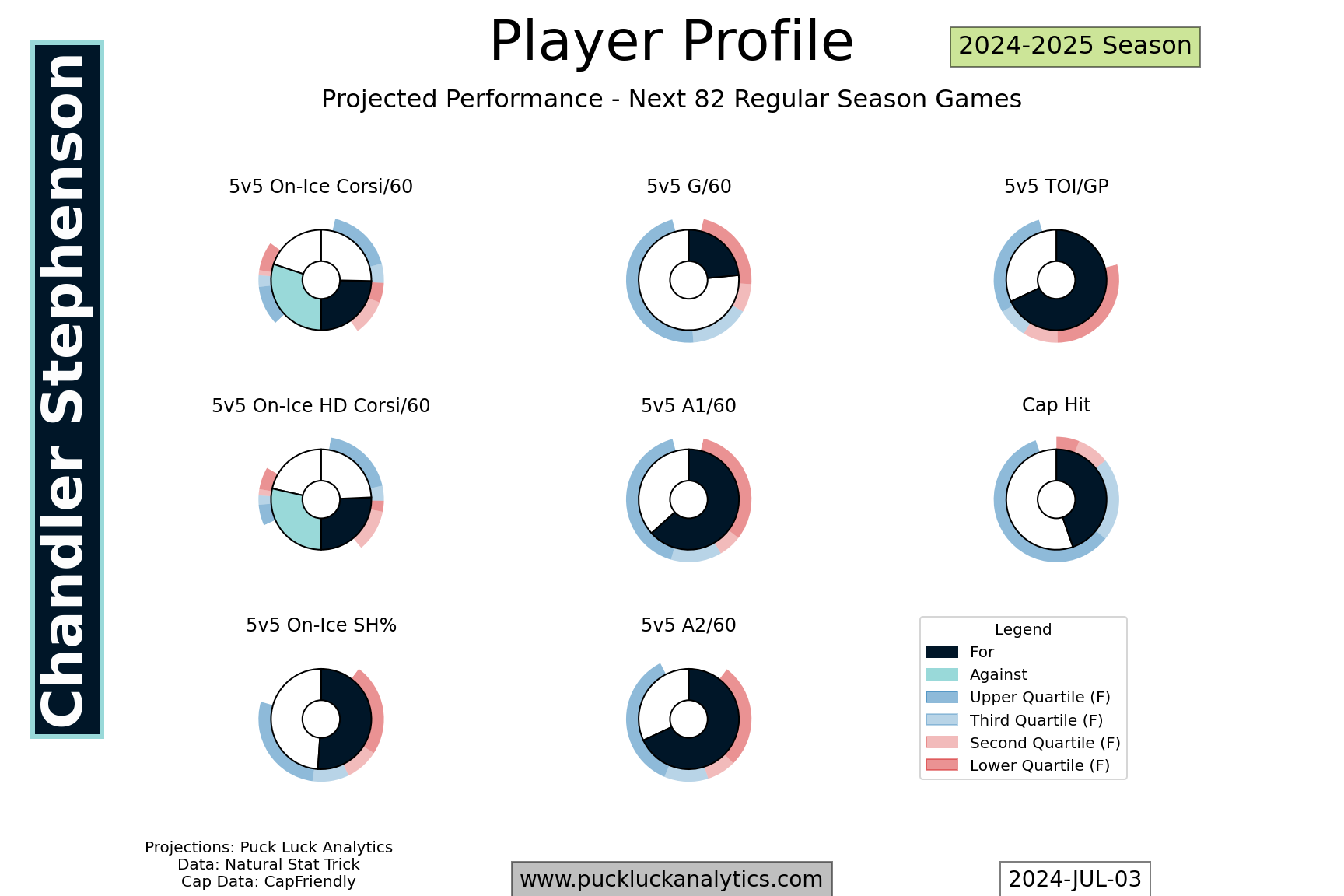
The Kraken did offload one veteran, however it seemed to be in response to the two signings above. With RFA Matty Beniers still in need of a new deal, cap space got very tight, very quickly after the Kraken’s July 1 spending spree and the blue line ended up a bit crowded. The Kraken traded 32 year-old Brian Dumoulin to the Ducks on July 2 for a 4th round pick, freeing up $3.15MM cap space in the process.
Priority 2: Start the Transition to the Next Cohort
Matt Beniers represents the leading edge of the Kraken’s development cohort. At age 21, he already has a couple of NHL seasons under his belt. His ELC is up this summer and the Kraken need to decide how to handle his next deal. Is a bridge deal in the cards or will Seattle follow the recent trend of locking up young players for maximum term on their second contract?
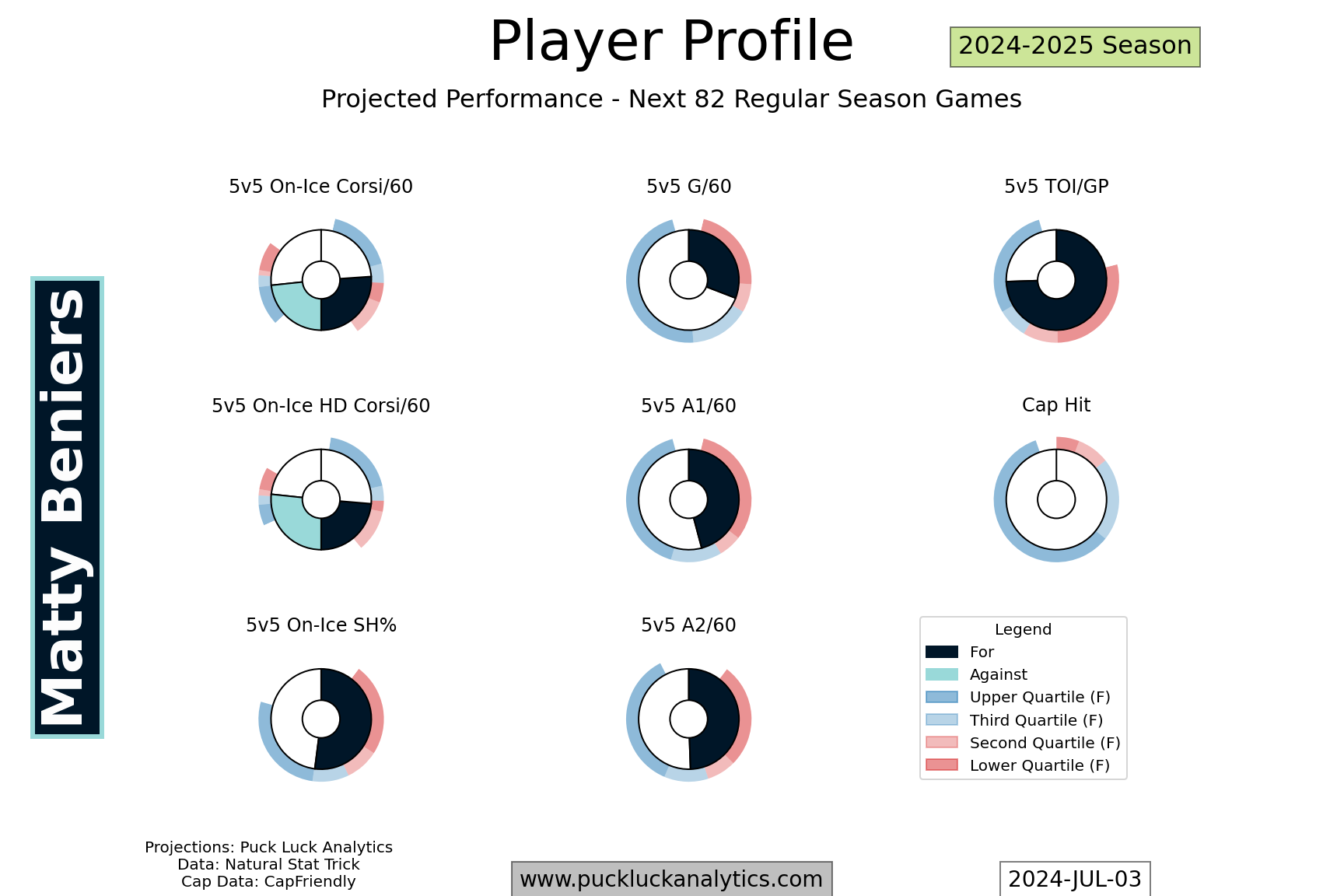
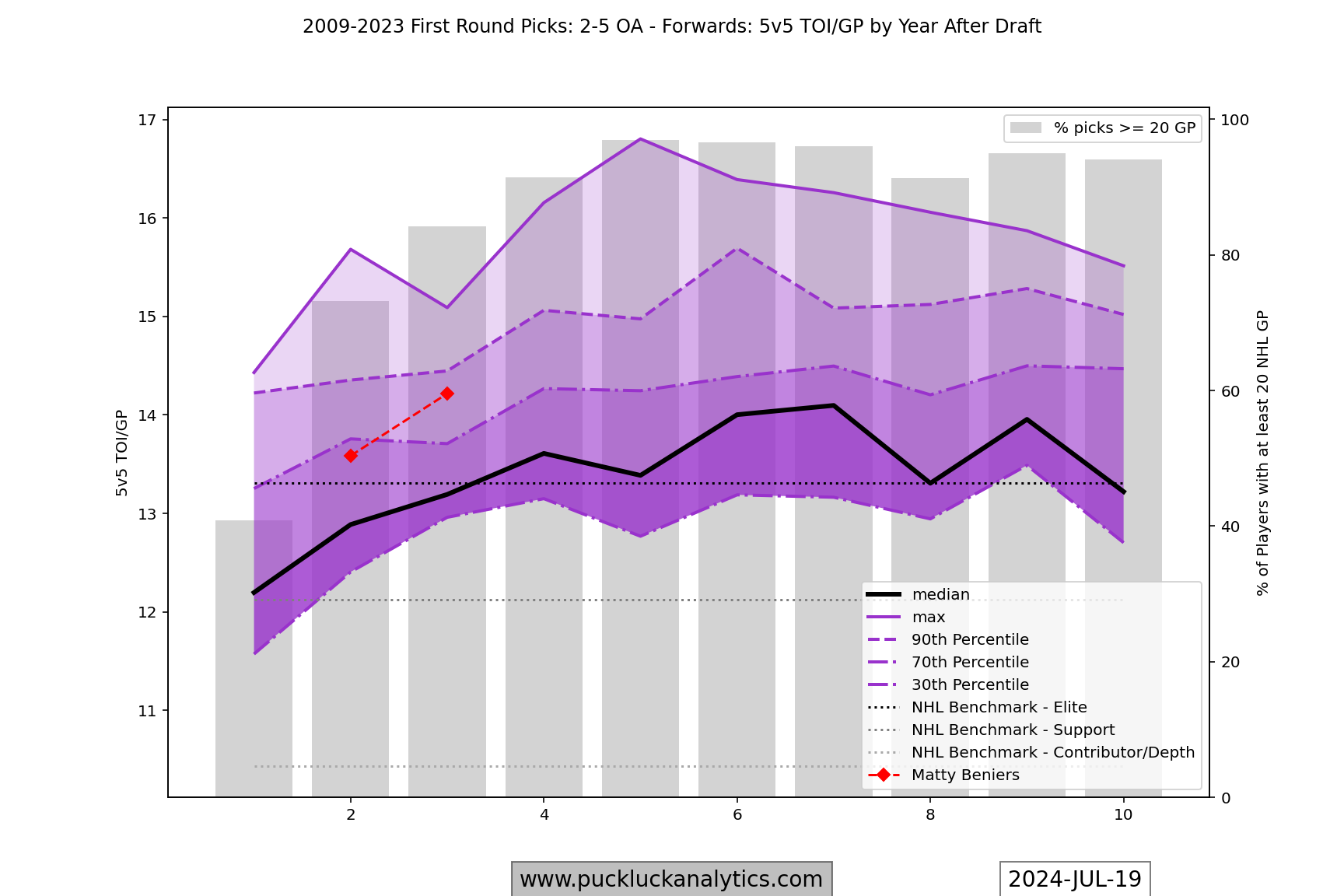
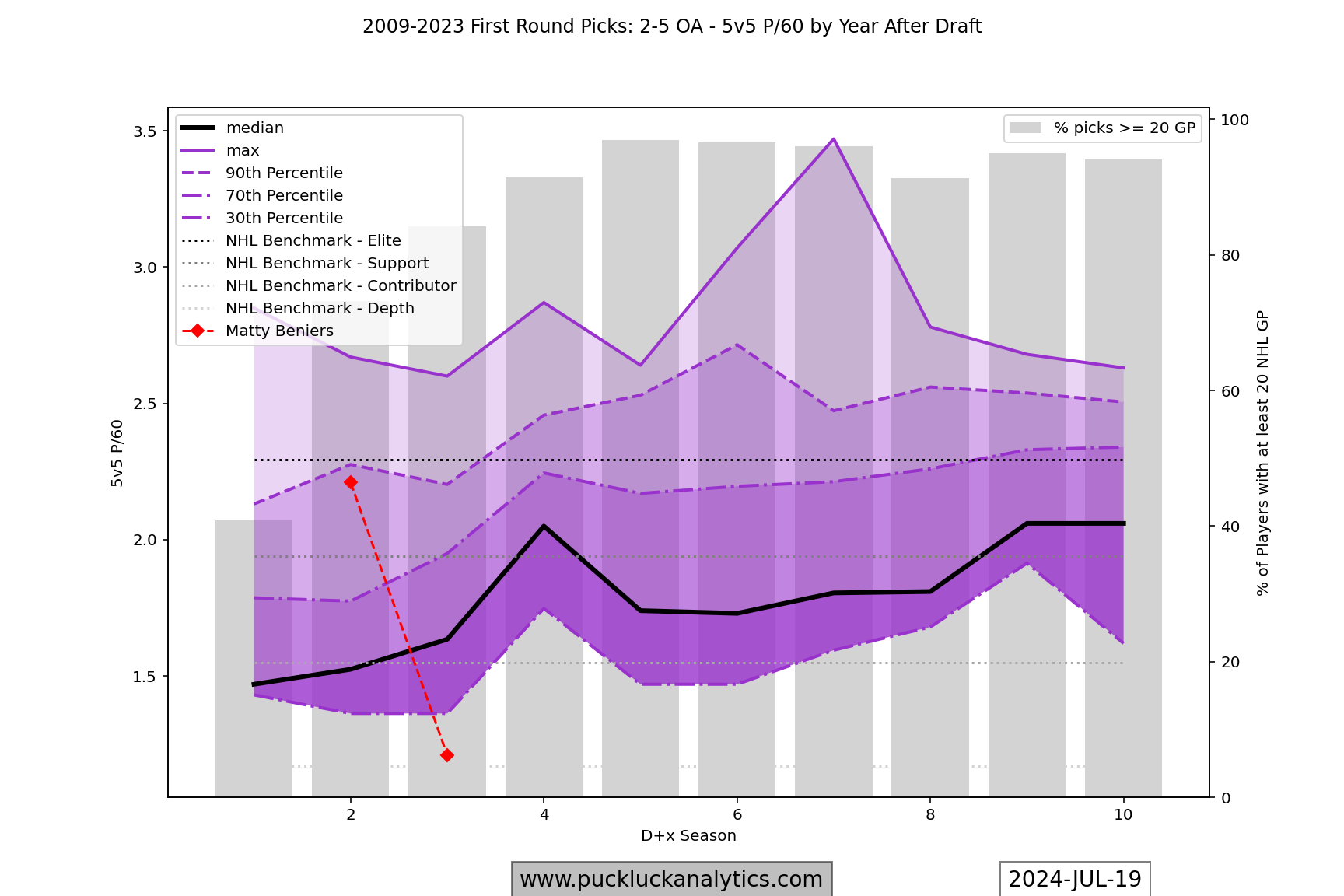
After a very successful rookie campaign, Beniers’ 5v5 production fell off in a big way in his sophomore season. A long term contract would have to be predicated on the idea that year two was an anomaly. A three year bridge would fit with the timeline on the Kraken’s current veteran cohort, although a long term deal is probably a the best option. Shooting percentages, both individual and team, played a large part in Beniers impressive rookie season before they fell quite dramatically last season. His underlying numbers were much more stable, though and I’d guess we’ll see his long term production stabilize somewhere in between his first two seasons.
Looking Ahead
The Kraken have a number of 2 and 3 year deals on the books right now, that push their current cap situation out through the 2026-2027 season. They’ve committed to this veteran group for at least a couple of years, so perhaps the thought is that their prospects need more time to percolate before they become the focal point of the NHL roster. Given their big ticket acquisitions this summer though, that may be overthinking the plan. They seem to want to win now, with a team built around proven, experienced players. The home grown prospects will have to contribute to earn a spot at the NHL level.

The trouble is, it doesn’t look like the Kraken have changed their fortunes much this offseason for the short term. Their projected performance for next season puts them below average relative to the rest of the league but close enough to average they should be able to hang in the playoff race. That is, of course, right where they finished last season.
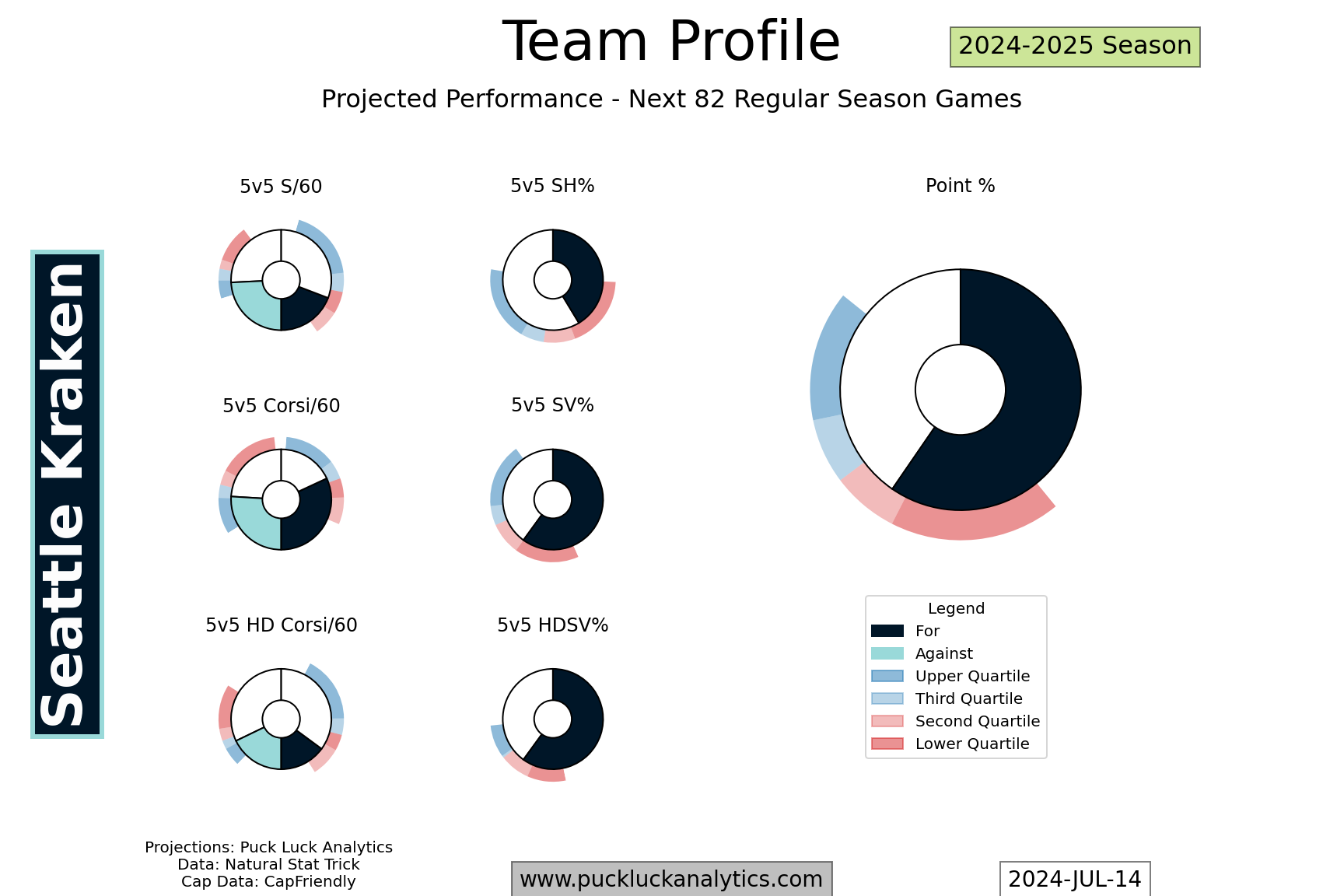
The Kraken’s formative years have not been short on intriguing decision making from a roster building perspective. With three years in the books and their own prospects nearing NHL readiness, we’ll soon start to see the results of their long term plan.



